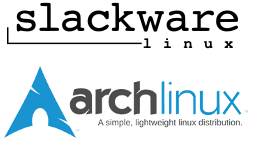Fedora Silverblue is an immutable variant of Fedora Workstation: every installation of this distribution is identical to the others, which is ideal for testing and predictability. On Fedora Silverblue, flatpaks are used as the primary method of installing software together with rpm-ostree which basically creates an additional layer over the immutable filesystem each time an rpm is installed. The toolbx utility is included in Fedora Silverblue as a way to create isolated, mutable environments using podman and the containers technology, allowing the user to install development tools and libraries without touching the main system. Toolbx can be used also on regular Fedora versions.
archlinux
How to rollback pacman updates in Arch Linux
Arch Linux is often praised for it’s bleeding edge software and rolling release model. We discuss these features more in depth in our article comparing Arch Linux and Manjaro. In addition to this praise, Arch Linux also has a reputation for being unstable. This reputation stems from the sometimes unpredictable nature of bleeding edge software. The latest software from upstream developers may contain bugs that were not apparent during initial testing. As a result, the risk is always present that updating with the package manager, pacman, may bring about unexpected results. These may include a specific piece of software no longer working properly (or at all) or even multiple applications or Desktop Environments no longer working as expected.
How to prevent NetworkManager connectivity checking
NetworkManager is a software utility for configuring and managing network interfaces. It is developed by the Gnome project and is used in many distributions and by many Desktop Environments. The stated goal of NetworkManager is to make setting up and configuring networking as automatic and painless as possible, so that it just works. To aid in this goal NetworkManager can perform connectivity checking in order to determine whether your network has full internet connectivity.
Getting what you want on Arch and Slackware – AUR and Slackbuilds

Package management on Linux systems has always been the subject of endless discussions, flamefests and bickering. Nonetheless, regardless of what one prefers, there’s something for everyone, if not in distro X, then maybe in distro Y. Some swear by binary package management, others say that the only true way is compilation from source. Today we will focus on two distributions that offer the best of both worlds : Arch Linux and Slackware.
Install Arch Linux in VMware Workstation
Arch Linux is a powerful and customizable operating system with a minimal base install. If you are a newer Linux user then you may be interested in installing Arch Linux, but have been reluctant to do so because of the learning curve that is sometimes associated with the process. If that is the case then it is a great idea to first install Arch Linux as a virtual machine and take it for a test drive. This tutorial will guide you through the steps of installing Arch Linux as a guest machine in VMware Workstation. Following this guide will leave you with a very minimal base Arch install which you can choose to customize however you would like.
Install ARCH Linux on ThinkPad X1 Carbon Gen 7 with encrypted filesystem and UEFI
In this article we will be installing Arch Linux on ThinkPad X1 Carbon Gen 7 Laptop. This tutorial contains installation instructions, basic configuration as well as some post-install tuning of Arch Linux to get you started.
Most of the instructions are Arch Linux installation generic hence with a simple modifications this tutorial can be used for any UEFI system installations. However, some points are specific to ThinkPad X1 Carbon Gen 7 therefore basic Linux Administration skills are required in case you are installing Arch Linux PC/Laptop other then ThinkPad X1 Carbon Gen 7.
This guide will only get you started. If you have some additional tips and tricks on how to improve performance please use the comments below so we can incorporate them into this guide.
Thank you.
After completing this tutorial you will end up with:
- Installed Arch Linux with GNOME desktop
- Encrypted
/directory usingluksencryption - Configured Linux boot loader using
systemd-boot - Created Logical Volumes and partitions to host your
swapand/directory - Configured EFI parition for your
/bootdirectory - Basic System configuration and fine-tuning
- Ability to use wireless to connect to your WiFi from GNOME desktop
- Functioning Bluetooth and Thunderbolt controller
- Ability up upgrade a firmware on your ThinkPad X1 Carbon Gen 7






